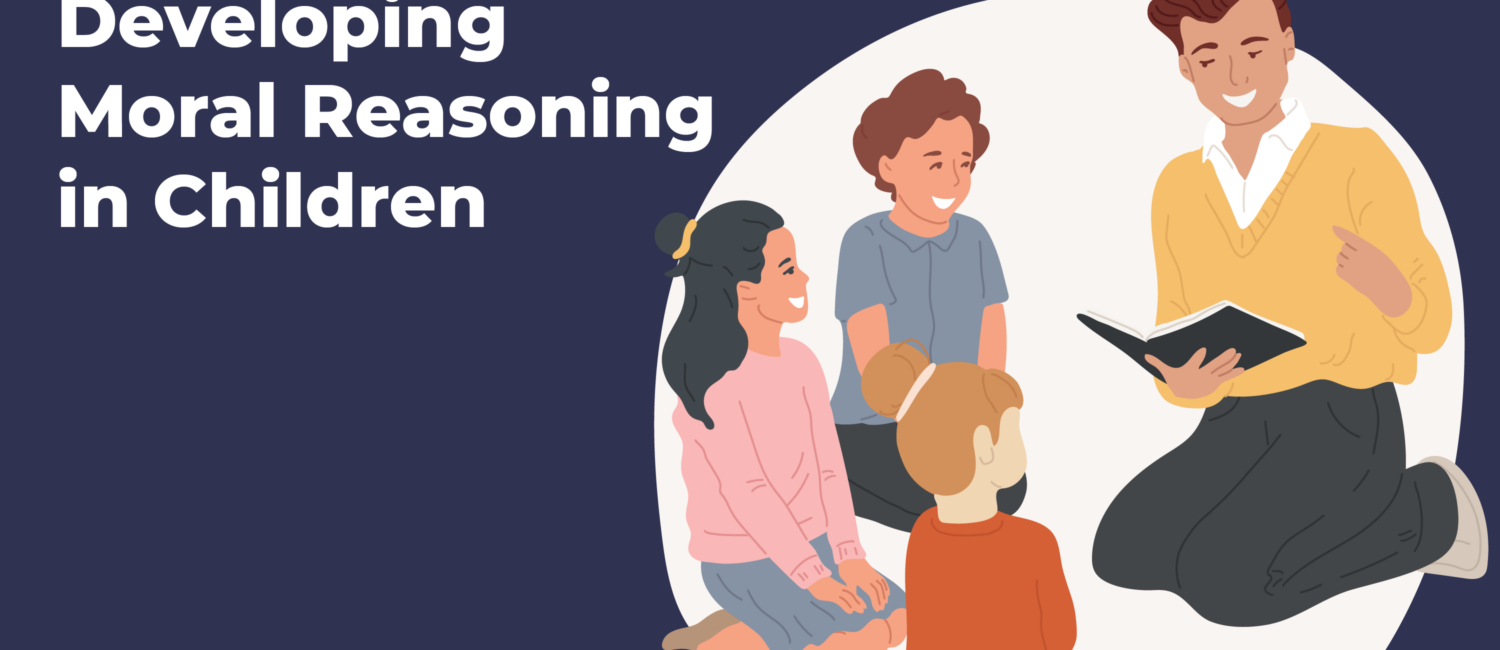
The moral problems currently occurring in Indonesia are quite complex. Cases of deviant moral behavior are becoming more frequent. Moral deviations are not only committed by adults, but also by children at high school, middle school, even elementary school levels. Sadly, various type of criminal cases committed by children are increasing in number, started from violence, such as extortion, bullying, brawls to theft and other cases, such as immoral acts and use of alcohol and illegal drugs.
Many behaviors that violate morals caused by several factor, one of which is an unsupportive environment. An unsupportive environment defined as weak social morality in child’s environment. Weak morality caused by a lack of good moral education in the family, school, and society.
According to Kohlberg in his article “The Measurement of Moral Judgment Vol. 1 (1987)”, moral education must start from an early age as a preventive measure so that when they grow up, they can control their behavior in accordance with moral values. Therefore, as the first institutions and environment known to children, the role of family is very crucial for children’s development, especially moral development. Families must be able to instill and teach correct moral values and be good role models.
One form of understanding that must be developed from an early age is “moral reasoning”. In the article “The Measurement of Moral Judgment Vol. 1 (1987)” by Anne Colby and Lawrence Kohlberg, explains that moral reasoning is the ideal basic logic used to evaluate whether a behavior is good or bad. By having moral reasoning, someone will have a strong rationale for making decisions about good or bad behavior. Kohlberg emphasized that moral reasoning can be called a “predictor of behavior”.
A child’s moral reasoning can develop if they can play an active role in exchanging opinions with peers about the underlying moral values. On the other hand, there is also needed someone who can express moral reasoning at a higher level than children. This environment and conditions can be obtained from school because the school environment facilitates children to interact with their peers and there are teachers whose role is to teach morals to children.
Children who have a higher understanding of moral reasoning can understand moral logic better, based on universally accepted values so they can behave well in accordance with these values. Besides that, with a good understanding of moral reasoning, children tend to behave well even they are not with teachers or parents.
The Right Way to Teach Moral Reasoning

In teaching and installing moral reasoning, methods needed that are appropriate and attractive to children. With the right method, children’s moral reasoning will develop from pre-conventional to conventional and children will become more comfortable in instilling moral values into themselves.
The method commonly used by parents and teachers at school is storytelling, but it is not followed by an in-depth story. This results in the moral values taught not lasting long in children.
After telling the story, the “follow-up” method must carried out continuously so that the moral reasoning taught can be well ingrained in the child. For example, after telling a story, invite children to discuss the moral values contained in the story. Also, give children the opportunity to express their opinions regarding these moral values and convey whether these moral values are good or bad for the child. Also, give examples to children because they will imitate the people around them, both parents and teachers.
Discussing Moral Dilemmas
One story telling method that can be used to teach moral reasoning to children is by discussing “moral dilemmas”. Through discussing moral dilemmas, children learn to understand good morals, see several behavioral choices, reasons of behaving, the consequences of each choice, and how to make choices based on awareness of behavioral choices and the consequences that accompany them. To discuss moral dilemmas with children, introductory media is needed that can tell the stories in an interesting way. In this way, children will be interested in paying attention and listening the story.
Apart from preparing stories with interesting method, several things that must be considered are giving children the opportunity to express their opinions about the dilemma, interpreting what happens in the story, directing children to see the cause of an accident, and asking questions that enable children to see a person’s point of view in behavior. Also, invites children to see the consequences of an action on other people and invites children to look for solutions to these problems.
In conclusion, the moral problems that occur on children caused by the weak morality of society in the child’s environment. What needs to be done—to prevent moral violations—is to teach and develop moral reasoning in children. Beside family, schools also have a big role in providing moral education and developing moral reasoning in children.
It is highly recommended to teach children morals from an early age, especially at preschool or at kindergarten level. Good synergy between family, school, and the child’s environment or community in educating and instilling moral values in children will produce children who are able to behave well in accordance with the moral values that apply in society.
Translator: Ratna Safitri
Author: Maulady Virdausy Fahmy
Editor: Teuku Zulman Sangga Buana









nice info